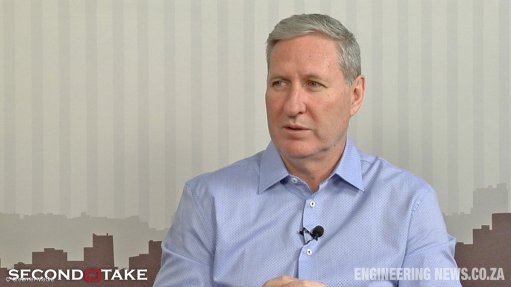NWU Policy Uncertainty Index improves but remains in negative territory
The North West University (NWU) Business School has revealed that its Policy Uncertainty Index (PUI) for the second quarter of this year has eased to 75.9 compared with its record high of 78.6 in the first quarter, but for now remains well in negative territory.
For the PUI, an increase above 50 reflects greater policy uncertainty, while a decrease below 49 reflects less policy uncertainty.
While the global outlook is highly uncertain, the business school notes that, on the trade front, there has been partial respite as the US administration has suspended most, but not all, tariff hikes until July 9, pending further negotiations.
“Internally, although there have been some positive developments, they were outweighed by negative factors,” it says.
The global economic growth outlook has been further trimmed by international organisations such as the International Monetary Fund and the Organisation for Economic Cooperation and Development, the business school adds, noting that growth forecasts have been reduced for most major economies, including the US economy. The EU economy is, however, still expected to achieve modest growth.
“The downward revision of various global economic growth outlooks therefore stems from a convergence of geopolitical risks, elevated economic uncertainty consequent on ‘Trumpanomics’ and erratic tariff decisions, and a tangible repricing of risks in financial markets generally.”
These overall economic assessments have been reinforced by the Israeli-Iran conflict, further raising global economic uncertainty. The business school notes that the second-quarter PUI was finalised before the US attack on Iran on June 22.
Moreover, the US Federal Reserve decided on June 18 to leave interest rates unchanged for the fourth time.
The business school further points out that the World Bank expects the sub-Saharan African economy to grow by 3.5% this year and by 4.3% in 2026 and 2027, but with the usual associated risks and uncertainties.
“Domestically, as South Africa moves into the second half of 2025, positive factors in the past quarter included lower inflation and easier interest rates and, if the inflation outlook continues to stabilise, there is the possibility of another modest cut in borrowing costs later in the year.”
NWU Business School notes that there is also the prospect that South Africa may be removed from the Financial Action Task Force’s grey list by the end of this year, in which case borrowing costs will be further lowered for the country.
At the policy level, the most important development in the second quarter, which is necessary to promote certainty, was probably the eventual finalisation and acceptance by Parliament on the third time of asking of a ‘pragmatic’ 2025/26 Budget, without the controversial value-added tax increase, it states.
“However, if the various key parameters in the Budget are not met, future risks to fiscal sustainability remain,” it warns.
Negative factors offsetting the positive ones in the second quarter included the muted high frequency data in recent months; the disappointing 0.1% GDP growth in the first quarter; the scaling down of growth forecasts for the full year by both the National Treasury and the South African Reserve Bank; and higher unemployment, the business school notes.
The weak fixed capital investment trends revealed by the first-quarter GDP figures also “raised a red flag”, to which heightened planned infrastructure spending must urgently respond, it argues.
“If present trends persist, the present GDP growth outlook for 2025 is about 1%, rising to about 1.5% next year.
“The incipient economic recovery in South Africa is struggling to gain momentum. A strategic pivot in growth policy is needed to create the extra economic buffers required to deal with external shocks.”
Although the second-quarter PUI remains well in negative territory for now, the business school says these trends have shown themselves in the past to be reversible, if the right actions are taken through policies and actions that are under South Africa’s control.
Politically, the GNU has now entered its second year of existence.
“The government’s policy agenda of a 3% GDP growth target in the medium term now urgently needs an impulse, a jolt, an acceleration, so that the tailwinds in the economy outweigh the headwinds in 2025 and beyond.”
Article Enquiry
Email Article
Save Article
Feedback
To advertise email advertising@creamermedia.co.za or click here
Comments
Announcements
What's On
Subscribe to improve your user experience...
Option 1 (equivalent of R125 a month):
Receive a weekly copy of Creamer Media's Engineering News & Mining Weekly magazine
(print copy for those in South Africa and e-magazine for those outside of South Africa)
Receive daily email newsletters
Access to full search results
Access archive of magazine back copies
Access to Projects in Progress
Access to ONE Research Report of your choice in PDF format
Option 2 (equivalent of R375 a month):
All benefits from Option 1
PLUS
Access to Creamer Media's Research Channel Africa for ALL Research Reports, in PDF format, on various industrial and mining sectors
including Electricity; Water; Energy Transition; Hydrogen; Roads, Rail and Ports; Coal; Gold; Platinum; Battery Metals; etc.
Already a subscriber?
Forgotten your password?
Receive weekly copy of Creamer Media's Engineering News & Mining Weekly magazine (print copy for those in South Africa and e-magazine for those outside of South Africa)
➕
Recieve daily email newsletters
➕
Access to full search results
➕
Access archive of magazine back copies
➕
Access to Projects in Progress
➕
Access to ONE Research Report of your choice in PDF format
RESEARCH CHANNEL AFRICA
R4500 (equivalent of R375 a month)
SUBSCRIBEAll benefits from Option 1
➕
Access to Creamer Media's Research Channel Africa for ALL Research Reports on various industrial and mining sectors, in PDF format, including on:
Electricity
➕
Water
➕
Energy Transition
➕
Hydrogen
➕
Roads, Rail and Ports
➕
Coal
➕
Gold
➕
Platinum
➕
Battery Metals
➕
etc.
Receive all benefits from Option 1 or Option 2 delivered to numerous people at your company
➕
Multiple User names and Passwords for simultaneous log-ins
➕
Intranet integration access to all in your organisation














